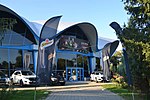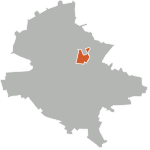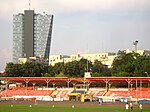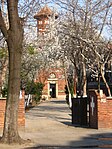Matei Balș hospital fire
2021 disasters in Europe2021 fires in Europe21st century in BucharestCOVID-19 pandemic in RomaniaCOVID-19 pandemic stubs ... and 3 more
Hospital fires in RomaniaJanuary 2021 events in RomaniaRomania stubs
On 29 January 2021, at around 05:00 EET, a fire broke out at the COVID-19 facility in the Prof. Dr. Matei Balș National Institute for Infectious Diseases in Bucharest, Romania, killing five people. On 4 February 2021, the death toll on the fire was reported to have risen to 12. The death toll rose again to 14 on 6 February 2021, with one more death added to the death toll on 8 February 2021 and two more again on 9 February 2021.
Excerpt from the Wikipedia article Matei Balș hospital fire (License: CC BY-SA 3.0, Authors).Matei Balș hospital fire
Strada Pârgarilor, Bucharest Tei (Sector 2)
Geographical coordinates (GPS) Address Nearby Places Show on map
Geographical coordinates (GPS)
| Latitude | Longitude |
|---|---|
| N 44.455972222222 ° | E 26.113638888889 ° |
Address
Institutul Național de Boli Infecțioase "Profesor Doctor Matei Balș"
Strada Pârgarilor
021108 Bucharest, Tei (Sector 2)
Romania
Open on Google Maps








